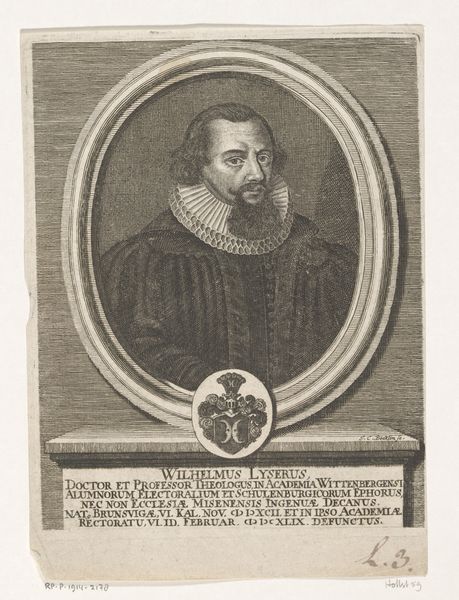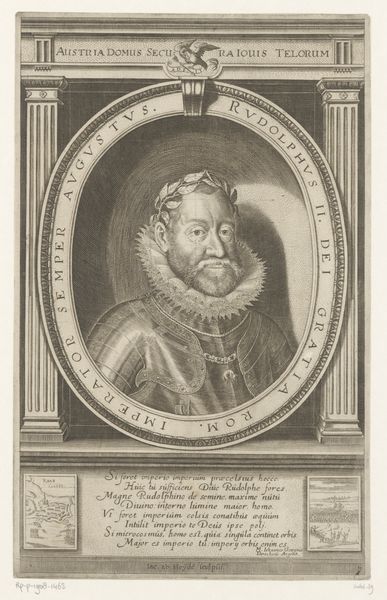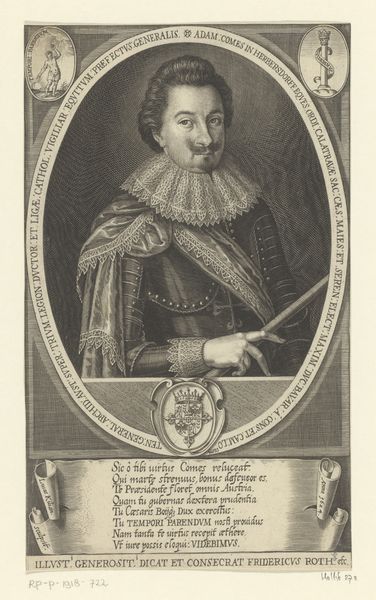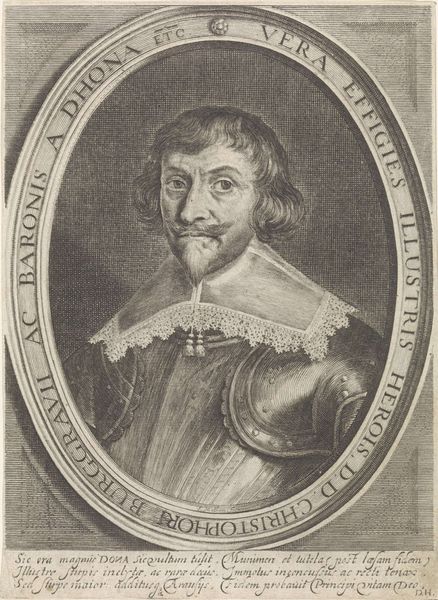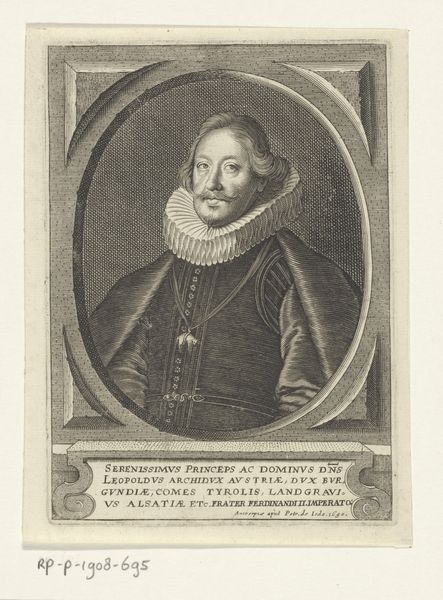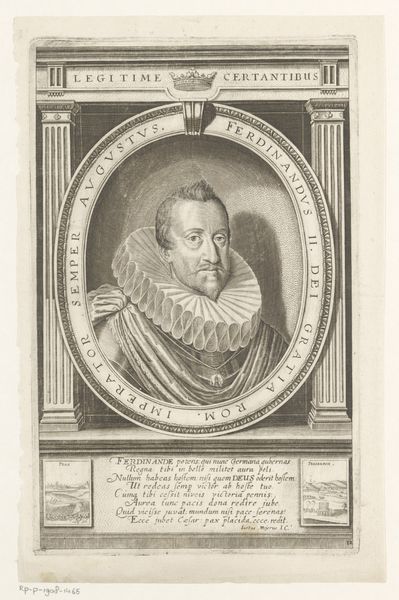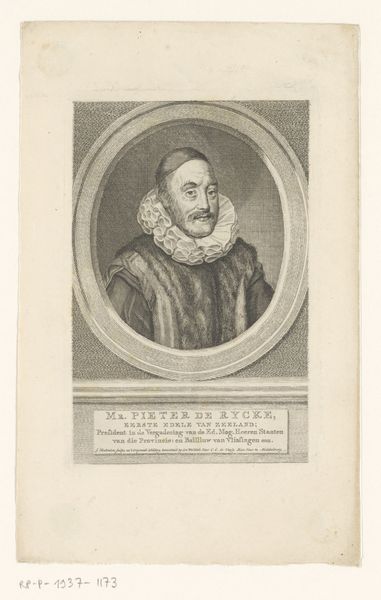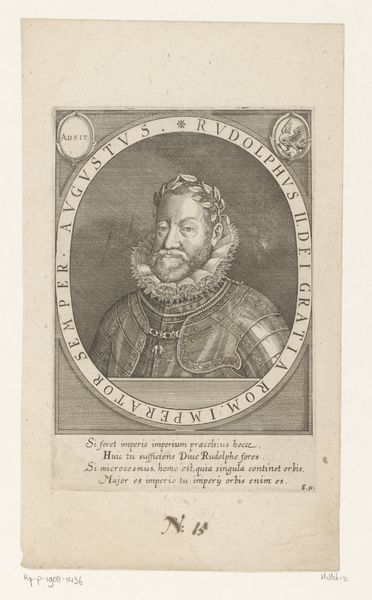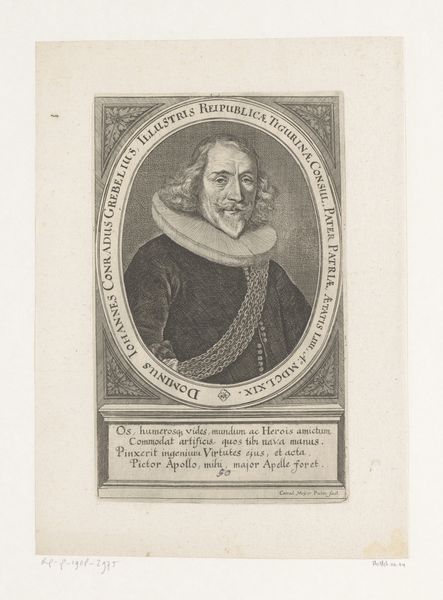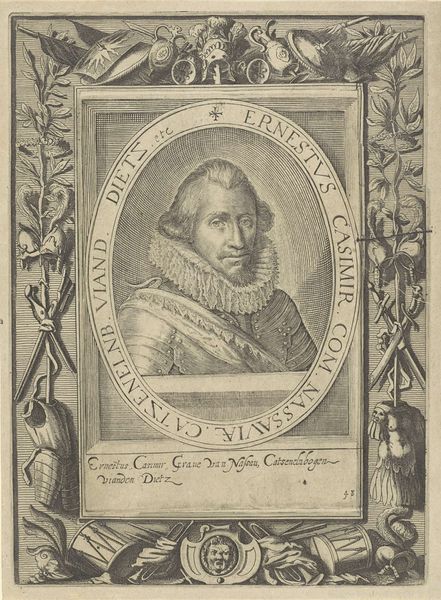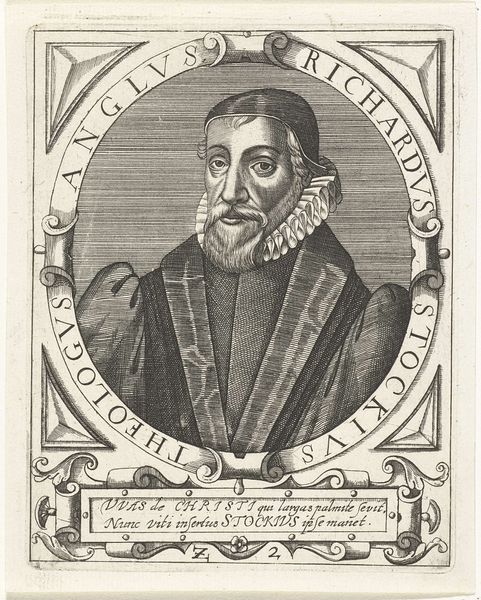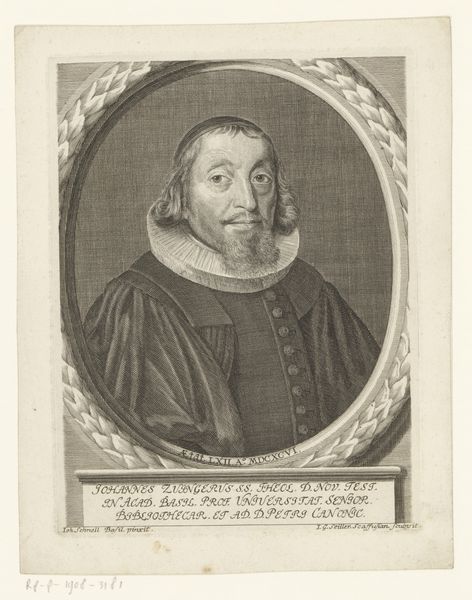
print, engraving
#
portrait
#
baroque
# print
#
old engraving style
#
engraving
Dimensions: height 250 mm, width 169 mm
Copyright: Rijks Museum: Open Domain
Curator: Here we have Crispijn van den Queborn’s "Portret van Leonardus Fodinaeus," dating from 1641. The print depicts a somber gentleman, likely of some scholarly standing. What’s your initial take? Editor: Well, right away I’m struck by how stern this man looks, though perhaps it's just the style of portraiture common at the time. There is such rigid formality; the oval frame containing him feels very assertive. Curator: The subject, Leonardus Fodinaeus, was a pastor in Delft at the time this piece was created. Van den Queborn crafted the print, based on the work of A. Palamedesz, employing engraving, a printmaking technique using metal plates to carve an image and then create an impression on paper. The original painting of the pastor may have existed for sometime before. Editor: Right, seeing that he was a pastor immediately casts the piece in a certain light. Considering the social and religious upheaval of the 17th century, a portrait such as this one underscores themes of authority and the church’s continued importance within Dutch society. Note the Latin inscription that suggests he strives for Heaven as it contrasts him with base foolishness. It really gives us insight into the construction of identity. Curator: Precisely. Prints such as this played a key role in circulating imagery and solidifying the standing of specific figures in society. In essence, art in this form wasn’t merely decorative but was part of broader institutional practices aimed at shaping public opinion and historical memory. Editor: Also consider how this print functions in a context where literacy might be limited, these images often serve as symbolic markers, broadcasting status and power regardless of textual comprehension. It reflects the social landscape and power structures of the day. The portrait does double duty, representing the individual and what he represents to his social order. Curator: Indeed. Understanding portraiture of this period means considering its role within these intricate socio-political networks. Van den Queborn was an instrumental part of this machine that upheld specific societal frameworks. Editor: Exactly. So next time you are trying to interpret a painting such as this, remember that what we may immediately observe as formal aesthetic is enmeshed in the broader currents of ideology, class, and historical context. Curator: Right. We can now proceed to the next artwork.
Comments
No comments
Be the first to comment and join the conversation on the ultimate creative platform.
